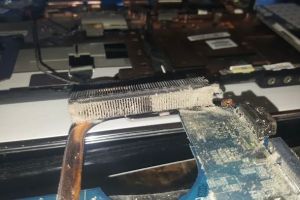How to Troubleshoot a Slow USB Boot Process: Tips and Solutions
- Check the USB Drive for Issues
- Optimize BIOS Settings
- Update Drivers and Firmware
- Test with Other USB Devices
- Consider Other Possible Factors
Check the USB Drive for Issues
If you're experiencing a slow USB boot process, the first thing to check is the USB drive itself. Sometimes, a slow USB boot can be caused by issues such as corrupted files or poor performance of the drive.

PC Solutions
6245 N 35th Ave #6, Phoenix, AZ 85017, USA
Step 1: Test the USB Drive on Another Computer
Try plugging your USB drive into another computer and boot from it. If the boot process is faster on the other system, then the issue may lie with your computer’s hardware or settings rather than the USB drive itself.
Step 2: Format the USB Drive
Sometimes, formatting the USB drive can resolve issues. Be sure to back up important data before doing so. Use a reliable formatting tool to reset the USB drive to its default state, and then try creating the bootable USB again.
Optimize BIOS Settings
Your computer’s BIOS (or UEFI) settings can have a significant impact on how quickly it boots from USB. Incorrect settings may slow down the boot process or even prevent the computer from booting from the USB altogether.
Step 1: Access the BIOS/UEFI
To access the BIOS, restart your computer and press the BIOS key (typically F2, F10, or Delete) during the boot-up process. Once inside the BIOS, look for settings related to boot order, boot mode, or USB configuration.
Step 2: Adjust Boot Order and Mode
Ensure that the USB drive is set as the primary boot device. Additionally, try switching between UEFI and Legacy boot modes to see which one results in a faster boot. UEFI is generally faster, but some older operating systems may not be compatible with it.
Update Drivers and Firmware
Outdated drivers or firmware on your system can lead to slow performance when booting from USB. Keeping your system up to date can fix bugs, improve hardware compatibility, and potentially speed up the USB boot process.
Step 1: Update USB Drivers
Make sure that your USB drivers are up to date. You can find updates through your system’s device manager or by visiting the manufacturer’s website.
Step 2: Update BIOS/UEFI Firmware
If you haven’t updated your BIOS in a while, it’s worth checking for firmware updates. Many manufacturers release updates that can improve USB compatibility and boot speeds.
Test with Other USB Devices
If the USB boot process remains slow, consider testing with a different USB drive. Older or cheaper USB drives may be slower than newer, higher-quality options. Switching to a faster USB drive could make a noticeable difference in the boot speed.
Step 1: Use a USB 3.0 Drive
If you're using a USB 2.0 drive, consider switching to a USB 3.0 or 3.1 drive. These drives generally offer much faster read and write speeds, leading to a faster boot process.
Consider Other Possible Factors
In addition to the factors above, there are a few other things that may be affecting your USB boot speed. Let’s explore some of these factors.
Step 1: Check for Malware or System Errors
In rare cases, malware or system errors can slow down the boot process. Running a full system scan with your antivirus software or performing system repairs may help improve boot performance.
Step 2: Consider Using a Different Bootable Tool
If you're still experiencing slow boot times, consider trying a different bootable tool. Some operating systems or recovery tools may have faster boot processes than others.
By following these troubleshooting steps, you can significantly improve the speed of your USB boot process. For additional tips on optimizing your system or creating faster bootable USBs, visit Ninja Stik.





























